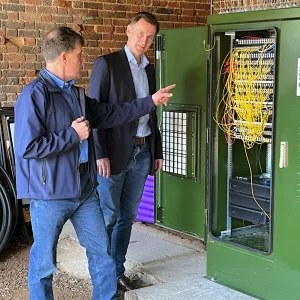mcglynnj
Casual Member
Bit of a specialty-scenario question here, but here goes...
Has anyone ever got a GPON/OLT device besides the ISP-provided unit to successfully work their internet connection?
Let me explain my personal situation:
I live in a new build area of Luton that is xDSL-only, as far as I know we don't get any modern full-fibre service (FTTP, Virgin Media etc.) whatsoever at the time of writing.
I know for a fact that my current copper line will have to go before the final switch-off for the old xDSL system in the coming years.
The way I understand it is that some installations use separate wall-mounted GPON-OLT boxes to convert the incoming connection to a standard gigabit-ethernet for connection the the main router's WAN port. And I know that, in some cases, these devices do not handle authentication and deferred that to the router connected to it via PPPoE instead.
My router-of-choice is the Ubiquiti Unifi Dream Machine Pro (UDM-PRO). What I would like to do, when my area's turn comes around for the switchover, is to have the incoming connection go straight into this unit with the use of an SFP module that plugs into its SFP-WAN port, and have the optical cable go straight into that, without the use of a physically-separated converter box.
Has anyone ever got a GPON/OLT device besides the ISP-provided unit to successfully work their internet connection?
Let me explain my personal situation:
I live in a new build area of Luton that is xDSL-only, as far as I know we don't get any modern full-fibre service (FTTP, Virgin Media etc.) whatsoever at the time of writing.
I know for a fact that my current copper line will have to go before the final switch-off for the old xDSL system in the coming years.
The way I understand it is that some installations use separate wall-mounted GPON-OLT boxes to convert the incoming connection to a standard gigabit-ethernet for connection the the main router's WAN port. And I know that, in some cases, these devices do not handle authentication and deferred that to the router connected to it via PPPoE instead.
My router-of-choice is the Ubiquiti Unifi Dream Machine Pro (UDM-PRO). What I would like to do, when my area's turn comes around for the switchover, is to have the incoming connection go straight into this unit with the use of an SFP module that plugs into its SFP-WAN port, and have the optical cable go straight into that, without the use of a physically-separated converter box.






































